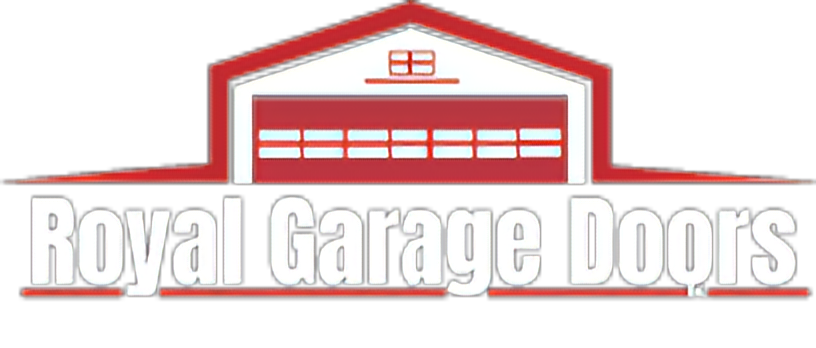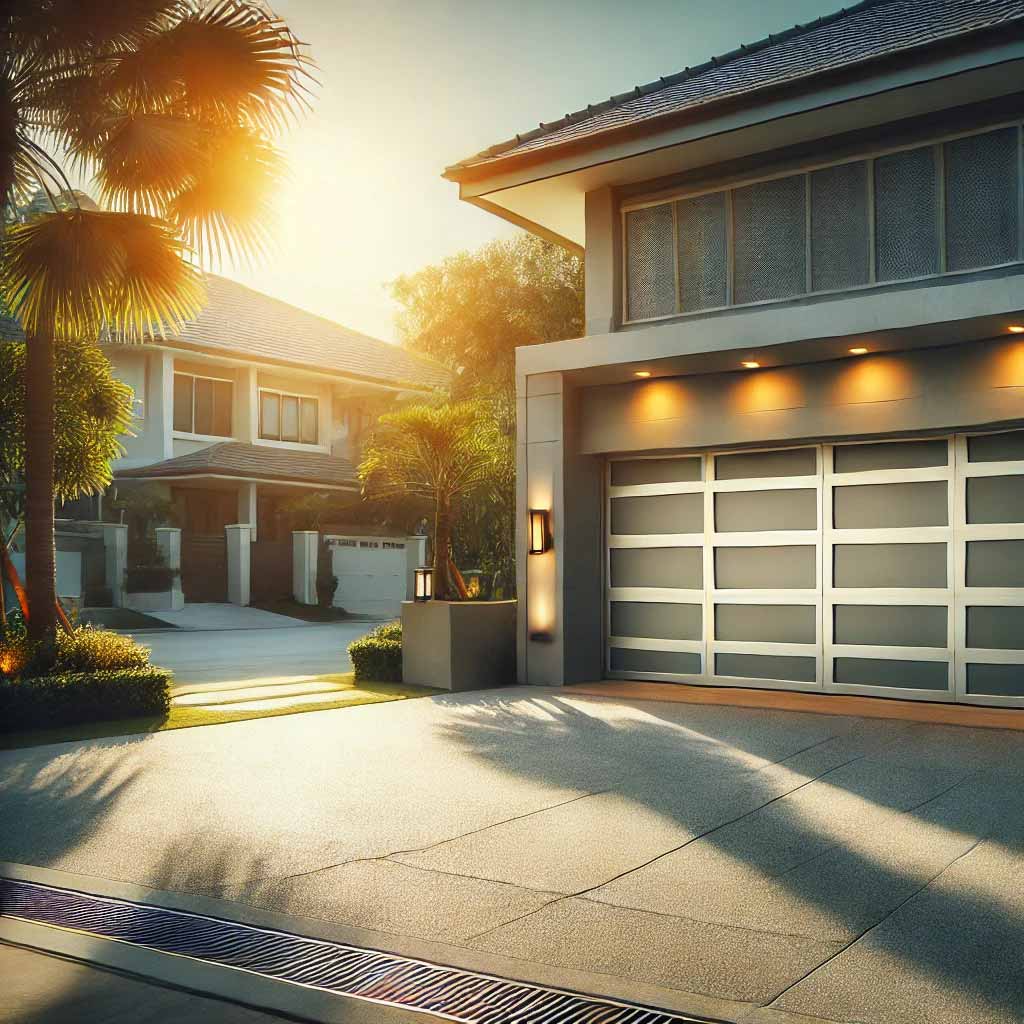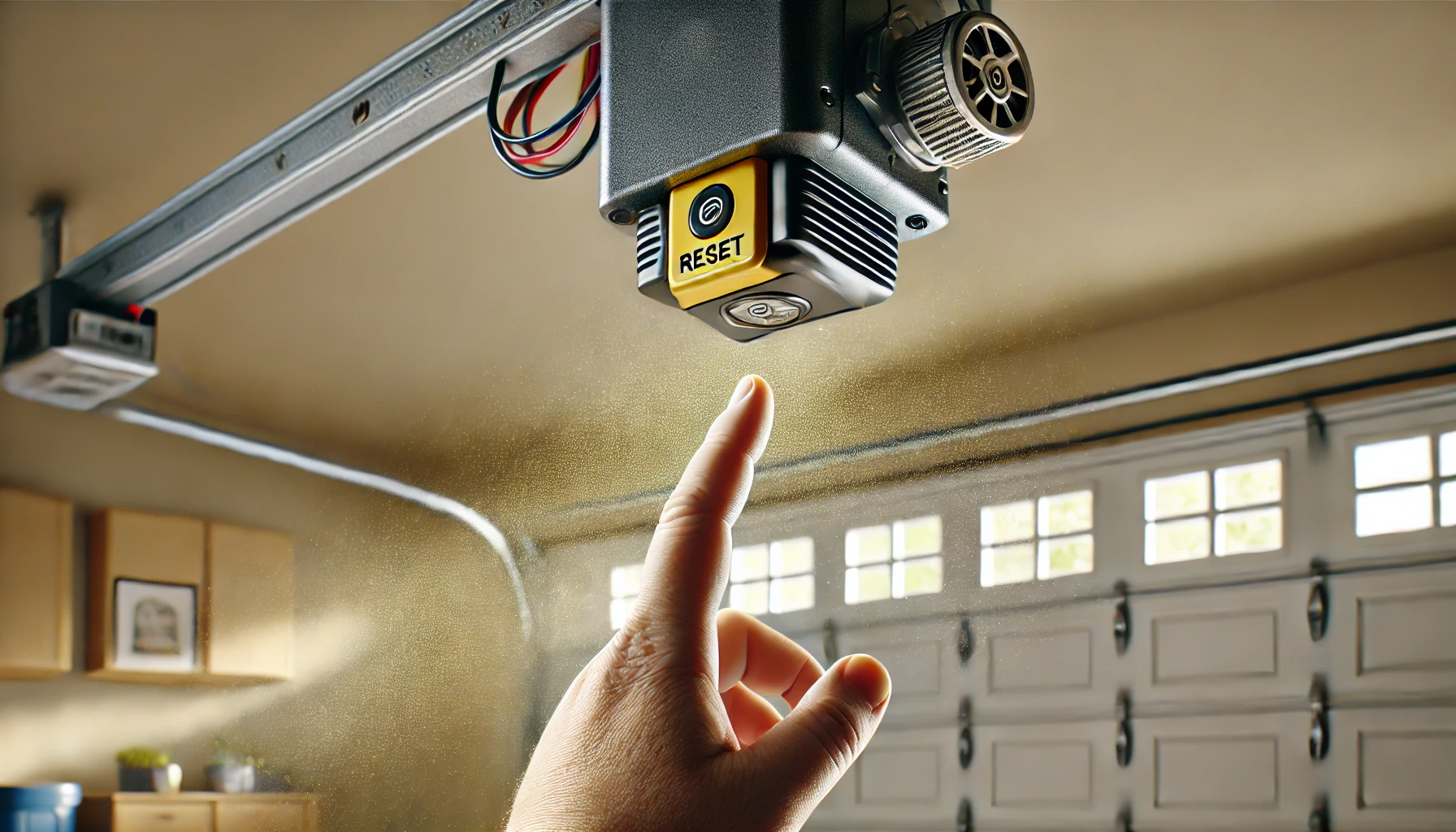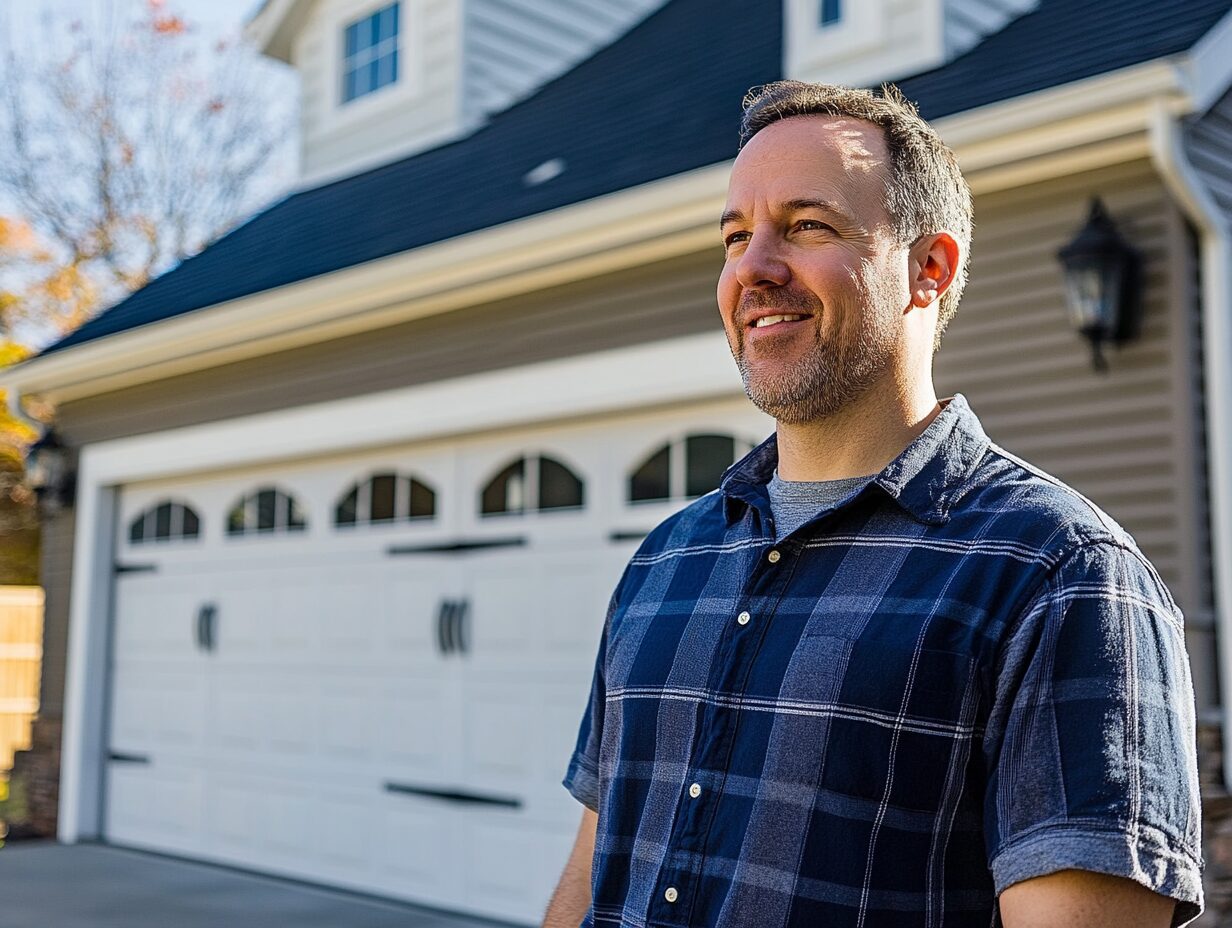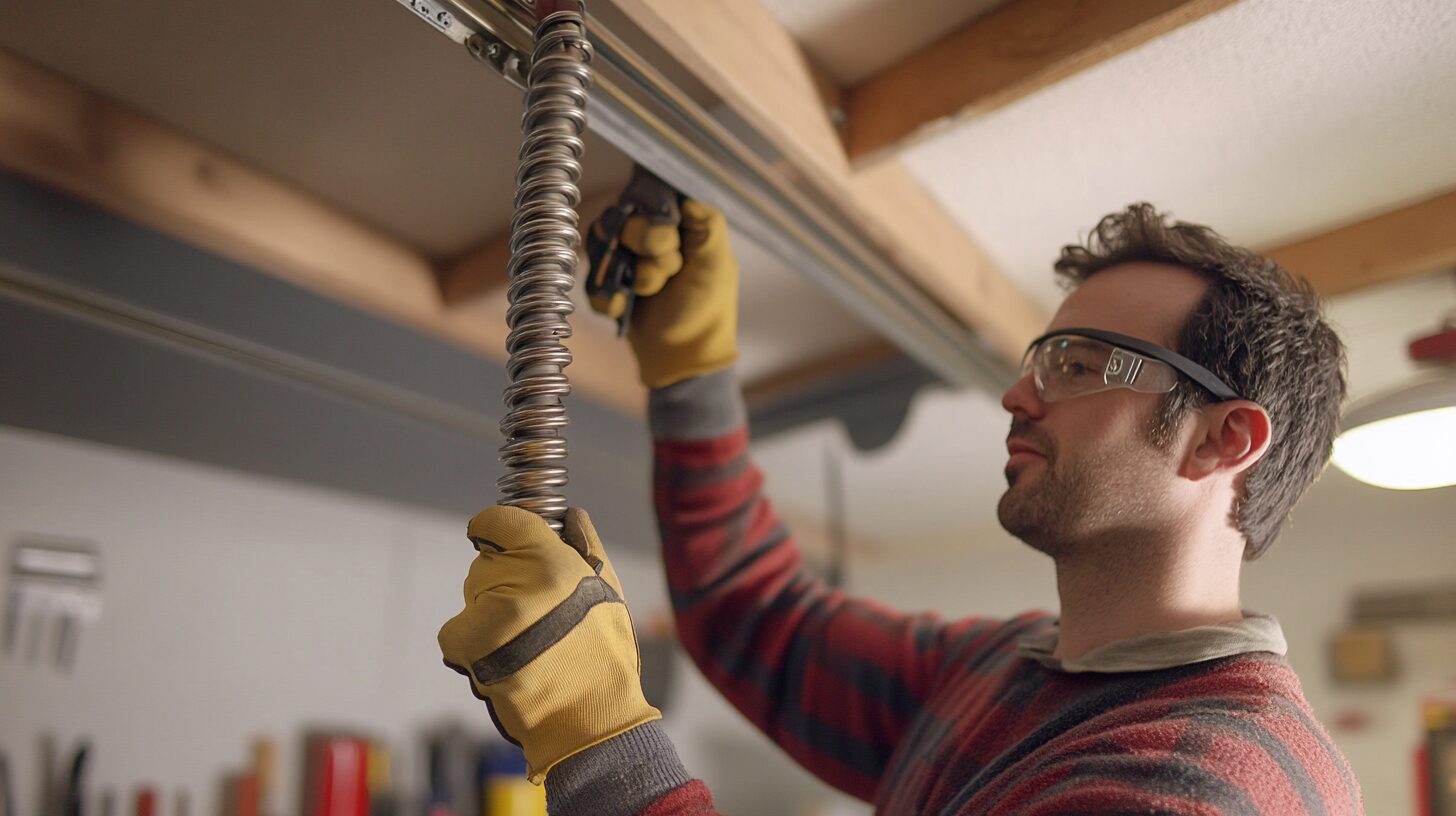A broken garage door can disrupt your routine, compromise security, and pose serious safety risks. Understanding the common garage door problems and how to resolve them can save time, money, and headaches. Let’s walk you through everything you need to know, from troubleshooting your broken garage door spring or opener to addressing dangerous broken springs.
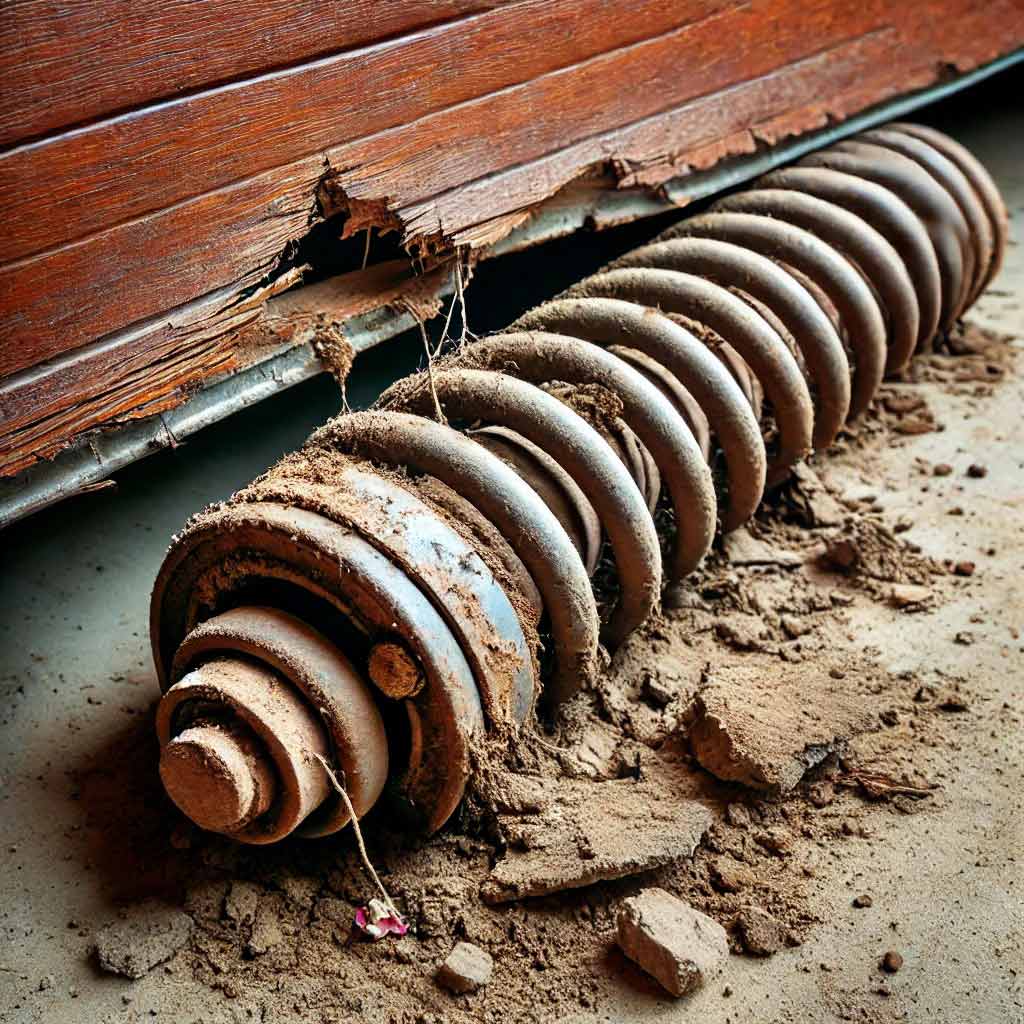
Signs of a Broken Garage Door
What Causes a Broken Garage Door?
There are many potential culprits when it comes to a broken garage. Common causes include:
- Broken torsion springs or extension springs wearing out over time.
- Damage to the door tracks due to misalignment.
- Worn-out rollers or bent hinges.
- Power surges affecting the garage door opener system.
- Broken cables that cause uneven lifting.
- Frequent exposure to weather conditions that lead to rust and wear.
Warning Signs of a Faulty Garage Door System
Pay attention to these signs that your garage door system may need immediate attention:
- Unusual loud noises when the door opens or closes.
- The garage door moves unevenly or gets stuck halfway.
- Difficulty operating the door manually.
- The door fails to close fully or reverses unexpectedly.
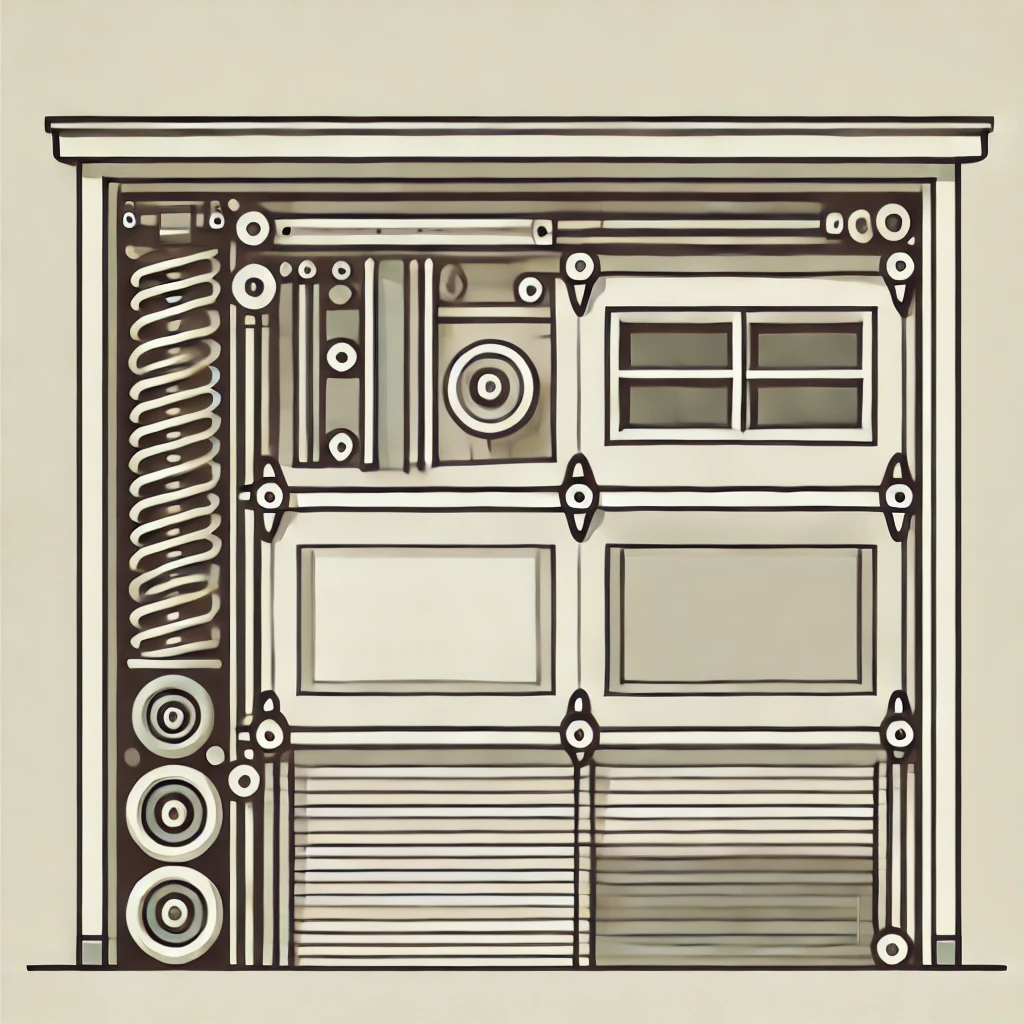
Common Garage Door Problems and Solutions
One of the most frequent issues is a broken garage door spring. Springs handle the heavy lifting, so when they break, the garage door repair becomes inoperable.
Broken Garage Door Springs
- Torsion springs: Mounted horizontally above the garage door.
- Extension springs: Positioned along the sides of the door.
Torsion springs provide smoother operation but are under high tension, making repairs risky. Extension springs are more affordable to install but prone to damage.
Broken Torsion Springs vs. Extension Springs
Worn-Out Rollers and Hinges
Over time, the rollers and hinges can wear out or break. This issue causes the door to move unevenly, leading to strain on other components.
- Replace bent or rusted rollers.
- Tighten or replace loose hinges.
Misaligned Door Tracks
Door tracks guide the garage door as it opens and closes. If they become misaligned, the door may jam or even fall off.
- Inspect for gaps between the door tracks and rollers.
- Use a rubber mallet to gently realign the tracks.
Garage Door Opener Issues
Troubleshooting a Malfunctioning Garage Door Opener
A faulty garage door opener can prevent the automatic garage door opener from responding to your commands. Check the following:
- Ensure the garage door opener remote has fresh batteries.
- Check the motor for overheating.
- Inspect the sensors for blockages.
- Reset the opener system using the manual reset button.
Garage Door Opener Remote Failures
A common problem is a non-responsive garage door opener remote. To fix this, try reprogramming the remote or replacing the battery.
Automatic Garage Door Opener vs. Manual Operation
When the garage door opener malfunctions, you may need to operate the door manually. However, be cautious—a broken spring makes manual operation dangerous.
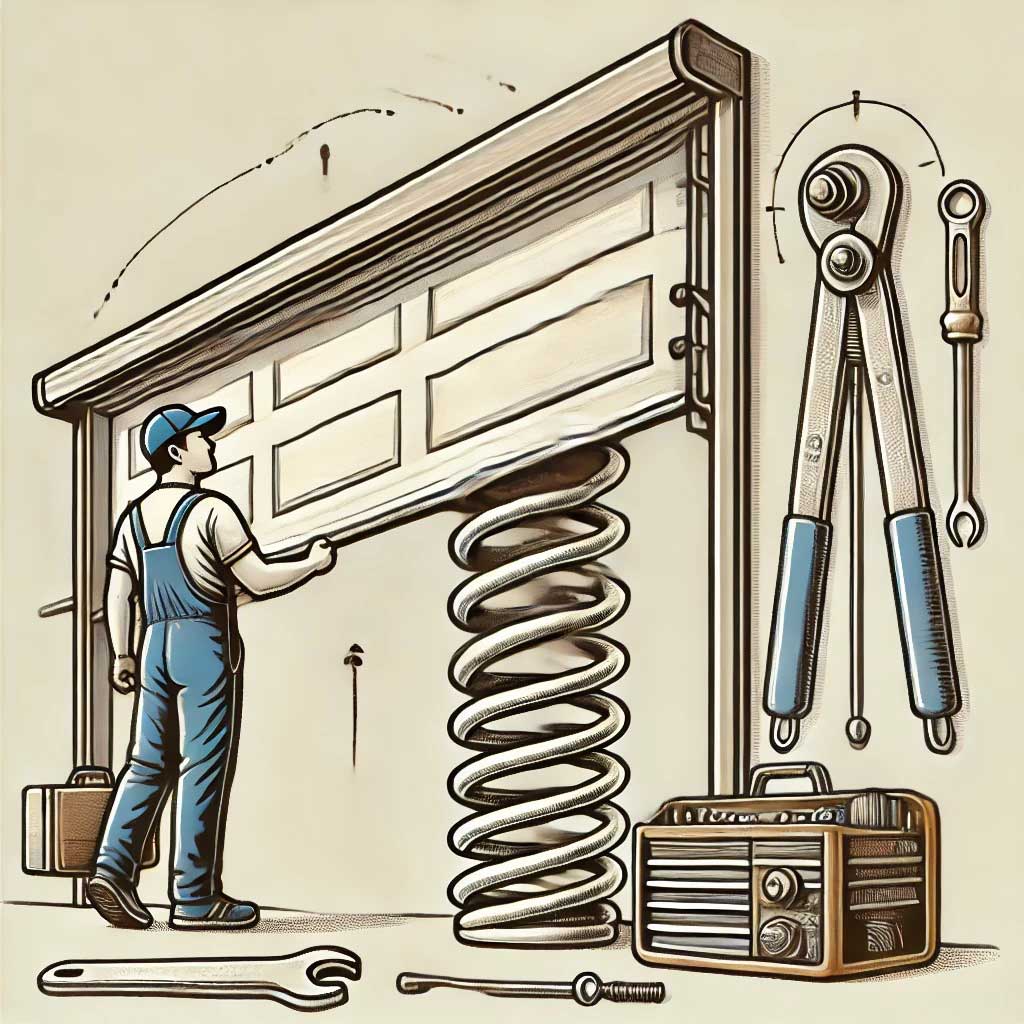
The Importance of Timely Garage Door Spring Repair
When to Seek Garage Door Spring Replacement
If you notice a gap in the garage door spring or hear a loud snap, you likely need a full garage door spring repair or replacement. Ignoring this issue can lead to further damage.
Consequences of Ignoring a Broken Garage Door Spring
Operating a garage door with a broken spring can cause the motor to burn out and may result in the door collapsing.
Steps for New Garage Door Installations
For new garage door installations, professional expertise ensures your garage door system is safe and secure. This process involves:
- Measuring and aligning the door tracks.
- Installing the springs and rollers.
- Testing the garage door opener.
Ensuring Garage Door Safety and Functionality
Preventative Maintenance Tips
- Lubricate the hinges, springs, and rollers regularly.
- Tighten any loose components.
- Inspect the door tracks for debris.
- Test the safety sensors to ensure they are aligned.
Why Regular Inspections Matter
Regular inspections help identify small issues before they escalate into costly repairs.
How to Fix Garage Door Problems
Fixing a Stuck Garage Door
- Check for obstructions on the door tracks.
- Inspect the springs and cables for damage.
- Ensure the sensors are clean and aligned.
Addressing Loud Noises
A loud noise when the garage door operates could indicate worn rollers or a need for lubrication.
What to Do When the Door Only Opens on One Side
If the door lifts unevenly, inspect the springs, any broken springs, cables, and rollers for damage.
When to Replace vs. Repair
Factors to Consider
- The age of your garage door.
- The extent of the damage.
- Whether the garage door system meets current safety standards.
Cost Comparison of Repair vs. Replacement
In some cases, a full garage door replacement is more cost-effective than constant repairs.
DIY vs. Professional Garage Door Services
While small tasks such as lubricating rollers and tightening hinges can be DIY-friendly, complex issues like spring replacement or track realignment require professional attention.
- DIY Pros: Cost savings, convenience.
- Professional Pros: Ensures safety, longer-lasting results.
Common Myths About Garage Door Maintenance
- Myth 1: “Garage doors don’t need regular maintenance.” Regular checks can prevent major breakdowns.
- Myth 2: “A noisy door is normal.” No, noise often indicates an underlying issue.
Customer Satisfaction and Professional Garage Door Repair Services
Hiring a professional ensures the job is done correctly and enhances customer satisfaction. A professional can also recommend whether you need a new opener or minor repairs.
Final Insights Before You Go
Before wrapping up most garage doors here, let’s expand on a few essential considerations to make your garage door system as efficient and long-lasting as possible:
Comprehensive Garage Door System Care
Most garage doors are designed to last for years, but only when every part—springs, tracks, cables, and openers—works in harmony. Regular maintenance ensures the entire garage door system remains durable, safe, and quiet. This involves more than just basic inspections; homeowners should also test the balance and tension of the garage door spring to ensure that it remains aligned. Fully equipped systems with smart openers and safety features help avoid sudden failures.
Additionally, always check that the tracks are securely attached to the wall and free from bends that could affect the weight distribution.
Handling Spring Breaks
When a garage door spring breaks, the balance of the entire garage door system shifts, making it nearly impossible to lift the door manually. The added weight places additional strain on the motor, which may cause it to overheat or wear out prematurely. Springs are responsible for bearing most of the weight, especially in doors with sliding panels or multi-section rollers. Addressing garage door spring breaks promptly helps avoid emergency situations and prevents damage to other key components.
To avoid these issues, inspect the springs regularly for rust, gaps, or visible fraying.
Weight Distribution and Safety
The weight of the garage door is crucial to its safe function. Uneven weight distribution due to broken or detached components can cause the door to slide off its tracks. For instance, a sliding mechanism with compromised rollers or weakened cables may cause one side of the door to sag. If any part becomes detached, it must be re-attached securely by a professional to ensure smooth operation.
Optimizing Power and Efficiency
The opener motor’s power needs to be calibrated correctly for the size and weight of your garage door. Many modern systems are equipped with energy-efficient settings that prevent overuse of power during operation. Adjusting the force settings to match the door’s weight can prevent wear and reduce noise, keeping your system quiet and efficient.
Easy Access and Smart Features
Having remote or app-controlled access to your house or garage enhances convenience, especially in emergency situations. Many smart garage door systems now offer motion detection and instant alerts, which can improve security and provide peace of mind. Additionally, systems equipped with safety sensors prevent accidental closings when objects or people are detected.
By following these detailed practices, homeowners can ensure access to their garage remains an essential and secure part of their house while maintaining quiet operation.
Garage Door Won’t Close
One common issue homeowners face is a garage door that won’t close completely. This problem can be caused by misaligned safety sensors, objects obstructing the path, or an issue with the garage door opener settings.
Solutions:
- Check for any obstructions near the base of the door.
- Ensure the safety sensors are clean and aligned properly.
- Reset the garage door opener if it malfunctions.
Garage Door Opener Remote Won’t Work
If your garage door opener remote stops working, it could be due to battery issues, signal interference, or the need for reprogramming.
Troubleshooting Tips:
- Replace the remote batteries.
- Reprogram the remote if necessary.
- Check for nearby electronic devices that could interfere with the signal.
Common Signs You Need Garage Door Spring Repair or Replacement
A broken or worn-out spring is often indicated by visible gaps, squeaking sounds, or a door that sags on one side.
Key Indicators:
- Loud snapping noise when the spring breaks.
- The door becomes heavy and hard to lift.
- Uneven opening or difficulty staying open.
Broken Garage Door Rollers
Faulty rollers can cause the door to shake or jam during operation, making it difficult to fully open or close.
Fix Suggestions:
- Lubricate the rollers regularly.
- Replace damaged or cracked rollers.
- Check for bent or loose hinges.
Top Causes of Broken Garage Door Springs
Garage door springs can break due to regular wear and tear, rust, or improper maintenance.
Preventive Tips:
- Apply anti-rust spray to prevent corrosion.
- Replace both springs at the same time if one fails.
- Avoid operating the door excessively to reduce strain.
Off-Track Garage Doors
An off-track door can be dangerous and is usually caused by an obstruction, broken cables, or misaligned tracks.
How to Handle:
- Stop using the door immediately to avoid further damage.
- Inspect for debris or bent sections in the tracks.
- Contact a professional if the problem persists.
Garage Door Won’t Open but the Motor Is Running
Sometimes the motor runs, but the garage door won’t budge. This can happen due to disconnected parts, broken springs, or a malfunctioning opener.
Steps to Diagnose:
- Check if the emergency release cord has been pulled.
- Inspect the cables for fraying or detachment.
- Ensure that the trolley is securely attached to the track.
Garage Door Opens a Little but Stops
When a garage door starts to move fully open, but then stops, it may be due to misaligned sensors, spring issues, or motor calibration errors.
Fix Steps:
- Adjust the up-force setting on the garage door opener.
- Inspect the springs for damage or loss of tension.
- Ensure that the tracks are free from debris or blockages.
Conclusion
Maintaining your garage door ensures safety, convenience, and curb appeal. Regular repairs and routine maintenance help prevent costly emergencies and prolong the door’s lifespan. By addressing small issues early and choosing professional help when needed, you can rest easy knowing your garage door system is secure.
For top-tier installations and repairs, consult trusted professionals who prioritize safety and performance.
Frequently Asked Questions (FAQ)
What to do if my garage door breaks?
If your garage front door opens or breaks, stop using it immediately to prevent further damage. Identify any visible issues like broken springs, cables, or rollers. You can attempt simple fixes like clearing obstructions or resetting the opener, but for major issues, contact a professional to ensure your safety.
How much does it cost to replace one garage door?
The cost to replace a single garage door varies based on material, size, and design. On average, homeowners can expect to pay between $500 and $2,500, with high-end custom doors costing more.
Can you replace one piece of a garage door?
Yes, in many cases, a damaged panel can be replaced individually rather than replacing the entire door. However, the availability of matching panels depends on the manufacturer and model.
Who is responsible for garage door repair?
For homeowners, garage door maintenance and repairs are typically their responsibility. However, in rental agreements, the landlord may be responsible unless stated otherwise in the lease. For community-managed properties, homeowner associations (HOAs) may cover some repairs according to their guidelines.
